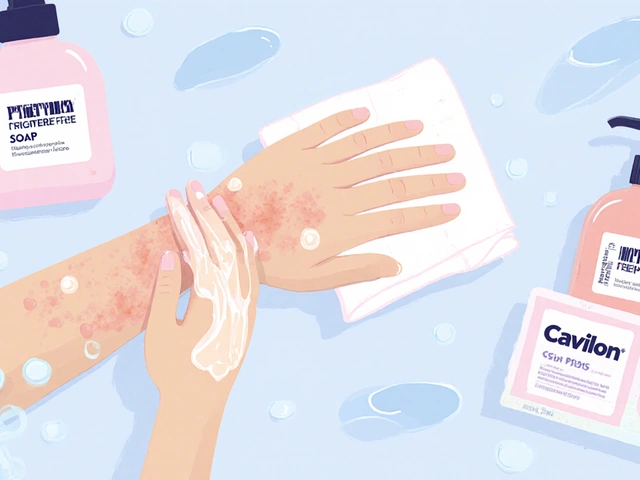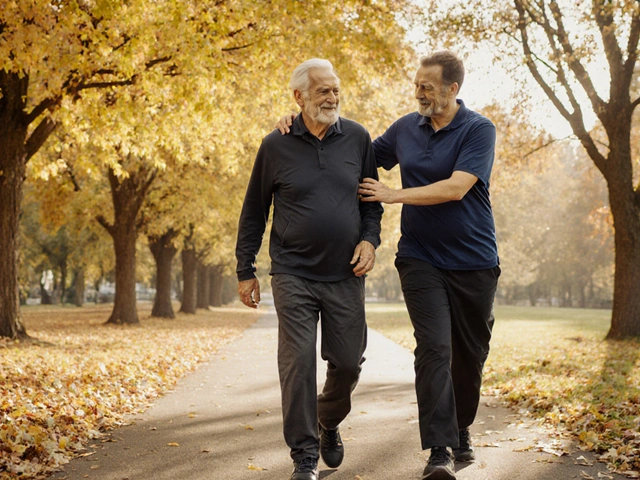Osteoarthritis: What It Is and How to Ease It
If you hear the word "osteoarthritis" and picture old people or grim doctors, think again. It’s a wear‑and‑tear condition that can affect anyone with joints that move a lot. The good news? You can keep the pain under control with a few everyday habits.
What is Osteoarthritis?
Osteoarthritis, often called OA, happens when the smooth cartilage that cushions your bones starts breaking down. Once that rubbery layer thins, the bones rub together, causing pain, stiffness, and sometimes swelling. It most often shows up in the knees, hips, hands, and spine, but any joint that bears weight can get hit.
Risk factors are straightforward: age, extra weight, past injuries, and genetics. Even if you’re young, a sprained knee or a long‑term repetitive motion job can set the stage. Watching for early signs—like aching after a walk, a stiff morning that eases after moving, or a popping sensation—helps you act before it gets worse.
Practical Ways to Manage Pain and Keep Moving
First, stay active. It sounds odd to move a sore joint, but gentle exercise improves blood flow, strengthens muscles, and reduces pressure on the cartilage. Try low‑impact activities like walking, swimming, or using a stationary bike. Aim for 20‑30 minutes a day, three to five times a week. If you’re unsure where to start, a simple S shape stretch for the knees or a hand‑grip exercise can make a big difference.
Weight control matters a lot. Every extra pound forces your knees and hips to work harder. Cutting down on sugary drinks and swapping a bag of chips for a piece of fruit can shave off a few pounds and ease joint stress. Even a 5% weight loss can lower pain scores dramatically.
Heat and cold are free tools. A warm shower, heating pad, or warm towel relaxes stiff joints before you move. After activity, a cold pack reduces swelling. Switch them based on what feels best for you.
Over‑the‑counter pain relievers like ibuprofen or naproxen help short‑term, but talk to a pharmacist or doctor if you need them often. Some people benefit from topical creams that contain menthol or capsaicin—just apply to the sore spot and avoid broken skin.
When lifestyle tweaks aren’t enough, consider professional options. Physical therapists can teach you joint‑friendly movements and personalized strengthening plans. In more advanced cases, doctors might suggest injections (corticosteroid or hyaluronic acid) or minimally invasive surgeries. These are usually last‑resort steps after you’ve tried self‑care.
Lastly, protect your joints during daily tasks. Use ergonomic tools, avoid deep squats if they hurt, and take breaks when you’re on your feet for long periods. Small changes—like a cushioned mat in the kitchen or a supportive shoe—add up over time.
Osteoarthritis doesn’t have to sideline you. By spotting early signs, staying active, managing weight, and using simple at‑home tricks, you can keep the pain in check and enjoy the activities you love. Keep experimenting with what feels right, and don’t hesitate to ask a healthcare professional for a plan that fits your life.
Clear, evidence-backed guide to piroxicam for arthritis: when to use it, dosing, risks, interactions, safety tips, and how it compares to other NSAIDs in 2025.
Categories
Archives
Recent-posts
West Virginia's Clay County Prepares for New Boost in Tourism with Rail Bikes on Historic Railroad
Aug, 18 2024



 Medications
Medications




